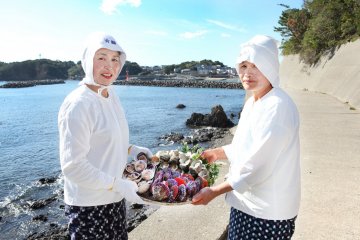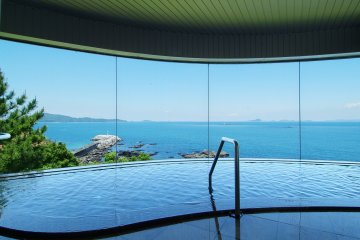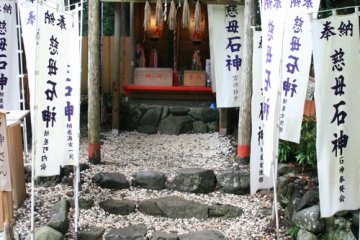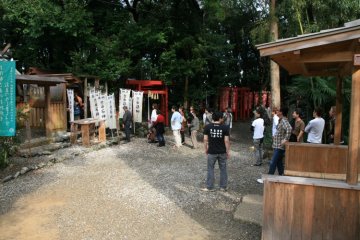If you’ve ever seen the James Bond movie “You Only Live Twice”, you may remember scenes of the traditional Japanese white clothed women free divers known as Ama.
The Ama divers were found in many coastal areas across Japan, but the art lives on and is best maintained in Mie Prefecture’s Toba and Shima regions. Diving for long periods of time without the use of scuba gear or air tanks, and with rudimentary goggles, they have been likened to the sports free-divers. It’s said that the divers could hold their breaths for as long as a minute and dive to depths of up to 30 meters, all without diving equipment. Here, the rugged, rocky Pacific facing coastline provided a bounty of pearls, as well as edible treasures, including Ise Ebi or Pacific spiny lobsters, octopus, oysters, abalone and other shellfish, various types of kaiso kelp and seaweed, and the Japanese favorite, uni, sea urchin.
Today the numbers of traditional women divers are dwindling, and the once popular image of the partially transparent when wet, white wrapped, slim, beautiful girl with the pearly smile and large wooden bucket has aged. Not always gracefully either. Although the waistlines are thicker and the faces are weathered and lined, the smiles remain warm. These days, more often than not, black rubber wetsuits replace the traditional white cotton clothing, white as it was believed to repel sharks. Today, the distinctive white robed Ama can only be seen at the few remaining tourist attraction areas.
One such place is in Toba, where simple Amagoya, Ama huts dot the coastline and where you’ll also find the Toba Ama Museum in Osatsu Cho. Written as “Sea Woman” in Japanese, many of the remaining Ama divers live in the area, and so it is only fitting that they be celebrated with a museum dedicated to their art.
The museum traces the 2,000 year history of the practice, while fully explaining their culture, heritage and the lifestyles of the women divers. Displays of related costume, equipment and daily items help to define and simplify understanding. For example, if you look carefully at their headscarfs and equipment, and you’ll notice embroidered pentogram and grid like patterns, talismans, protection against the evils of the sea. Just behind the museum is a small shrine that surprisingly is very popular among visitors. Tour busses regularly disgorge their passengers who flock to the shrine, long venerated by the Ama who believed it offered them protection from the wrath of the ocean.
Visit the museum and enjoy the chance to bond with some of the few remaining, mostly elderly Ama remaining while you can, because, like the Ama, you only live once.












